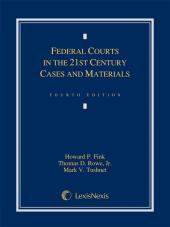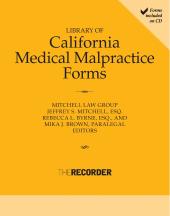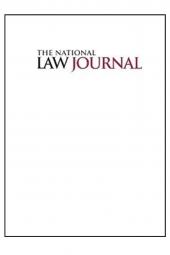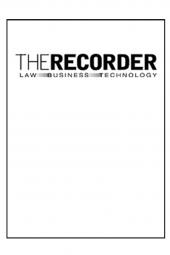Federal Courts in the 21st Century
Select subscription type
Terms & conditions
Subscribers receive the product(s) listed on the Order Form and any Updates made available during the annual subscription period. Shipping and handling fees are not included in the annual price.
Subscribers are advised of the number of Updates that were made to the particular publication the prior year. The number of Updates may vary due to developments in the law and other publishing issues, but subscribers may use this as a rough estimate of future shipments. Subscribers may call Customer Support at 800-833-9844 for additional information.
Subscribers may cancel this subscription by: calling Customer Support at 800-833-9844; emailing customer.support@lexisnexis.com; or returning the invoice marked "CANCEL".
If subscribers cancel within 30 days after the product is ordered or received and return the product at their expense, then they will receive a full credit of the price for the annual subscription.
If subscribers cancel between 31 and 60 days after the invoice date and return the product at their expense, then they will receive a 5/6th credit of the price for the annual subscription. No credit will be given for cancellations more than 60 days after the invoice date. To receive any credit, subscriber must return all product(s) shipped during the year at their expense within the applicable cancellation period listed above.
Subscribers receive the product(s) listed on the Order Form and any Updates made available during the annual subscription period. Shipping and handling fees are not included in the annual price.
Subscribers are advised of the number of Updates that were made to the particular publication the prior year. The number of Updates may vary due to developments in the law and other publishing issues, but subscribers may use this as a rough estimate of future shipments. Subscribers may call Customer Support at 800-833-9844 for additional information.
Subscribers may cancel this subscription by: calling Customer Support at 800-833-9844; emailing customer.support@lexisnexis.com; or returning the invoice marked 'CANCEL'.
If subscribers cancel within 30 days after the product is ordered or received and return the product at their expense, then they will receive a full credit of the price for the annual subscription.
If subscribers cancel between 31 and 60 days after the invoice date and return the product at their expense, then they will receive a 5/6th credit of the price for the annual subscription. No credit will be given for cancellations more than 60 days after the invoice date. To receive any credit, subscriber must return all product(s) shipped during the year at their expense within the applicable cancellation period listed above.
Product description
To purchase a printed version of this title, please visit www.caplaw.com.
View or download the free Latest Online Supplement for this product.
This Edition of Federal Courts in the 21st Century is leaner, with tighter focus on the areas usually covered in upperclass courses on Federal Courts or Federal Jurisdiction. The material in chapters on Aggregative Procedure, mostly covering class actions, and on Expanding and Restricting Complex Federal Litigation, covering the likes of various joinder devices, venue and forum non conveniens, and multidistrict litigation has largely been eliminated.
A new Chapter 11 on Doctrinal and Statutory Restrictions on Federal Jurisdiction Related to State-Court Litigation, following the chapters on federal courts' statutory jurisdiction, covers the abstention doctrines and the Anti-Injunction Statute, 28 U.S.C. � 2283, previously treated in the complex-litigation chapter. And earlier coverage in the class-actions chapter of the Class Action Fairness Act of 2005 (CAFA) now is part of a new section at the end of Chapter 8 on Diversity and Alienage Jurisdiction. The new section is devoted to the three forms of minimal-diversity federal-court jurisdiction presently on the books - statutory interpleader; the Multiparty, Multiforum Trial Jurisdiction Act of 2002; and CAFA.
The chapters covering areas affected by the Jurisdiction and Venue Clarification Act of 2011 (JVCA), particularly Chapter 8 on Diversity and Alienage Jurisdiction and Chapter 10 on Removal, have been extensively revised to take account of the many (and positive) changes made by the JVCA. Chapter 8 also has a new principal case, Hertz Corp. v. Friend, in which the Supreme Court settled a circuit split over interpretation of a corporation’s “principal place of business” for diversity purposes.
The Fourth Edition has a new, concluding Chapter 18 on Federal Jurisdiction in Time of War and in an Age of Terrorism. This chapter’s principal case is the Supreme Court’s major 2008 decision in Boumediene v. Bush on habeas corpus for alien enemy detainees at the United States military base at Guantanamo Bay, Cuba. This chapter brings together themes from several aspects of the course - the role of the federal courts, separation of powers, the permissibility of “jurisdiction-stripping” legislation, the use of non-Article III federal tribunals, and suspension of the writ of habeas corpus. Included are background on the use of military commissions in United States history; discussion of executive, judicial, and legislative responses to the attacks of September 11, 2001; the Boumediene case itself; and developments since that decision, providing a timely, interesting capstone for the course.
Professors and adjunct professors may request complimentary examination copies of LexisNexis law school publications to consider for class adoption or recommendation. Please identify the book(s) you wish to receive, provide your institutional contact information, and submit your request here.
This book also is available in a heavily discounted, three-hole punched, alternative loose-leaf version printed on 8 ½ x 11 inch paper with wider margins and with the same pagination as the hardbound book.
epub is protected by Adobe DRM.
eBooks, CDs, downloadable content, and software purchases are noncancelable, nonrefundable and nonreturnable. Click here for more information about LexisNexis eBooks. The eBook versions of this title may feature links to Lexis+® for further legal research options. A valid subscription to Lexis+® is required to access this content.
Table of contents
Chapter 1: THE STRUCTURE OF FEDERAL JURISDICTION
Chapter 2: THE JUDICIAL ROLE: THE JUSTICIABILITY DOCTRINESCONGRESS'S POWER TO REGULATE JURISDICTION
Chapter 3: THE POTENTIAL REACH OF FEDERAL JURISDICTION
Chapter 4: IMPLIED RIGHTS OF ACTION: "CONSTITUTIONAL" AND STATUTORY
Chapter 5: USING THE FEDERAL COURTS TO REGULATE STATE GOVERNMENT: THE BASIC CONCEPTS
Chapter 7: THE STATUTORY FEDERAL-QUESTION JURISDICTION
Chapter 8: DIVERSITY AND ALIENAGE JURISDICTION
Chapter 9: SUPPLEMENTAL JURISDICTION
Chapter 10: REMOVAL
Chapter 11: DOCTRINAL AND STATUTORY RESTRICTIONS ON FEDERAL JURISDICTION RELATED TO STATE-COURT LITIGATION
Chapter 12: THE PLACE OF TRIAL, THE LAW APPLIED, AND CHOICE OF LAW IN THE FEDERAL TRIAL COURTS
Chapter 13: FEDERAL COMMON LAW
Chapter 14: ALLOCATION OF AUTHORITY BETWEEN LIFETENURED FEDERAL JUDGES AND OTHER ADJUDICATORS, AND BETWEEN COURTS OF EXCLUSIVE AND COURTS OF CONCURRENT JURISDICTION
Chapter 15: FEDERAL APPELLATE JURISDICTION: COURTS OF APPEALS AND THE SUPREME COURT
Chapter 16: INTERJURISDICTIONAL PRECLUSION
Chapter 17: FEDERAL HABEAS CORPUS FOR STATE PRISONERS
Chapter 18 FEDERAL JURISDICTION IN TIME OF WAR AND IN AN AGE OF TERRORISM
 Lexis Nexis
Lexis Nexis 



